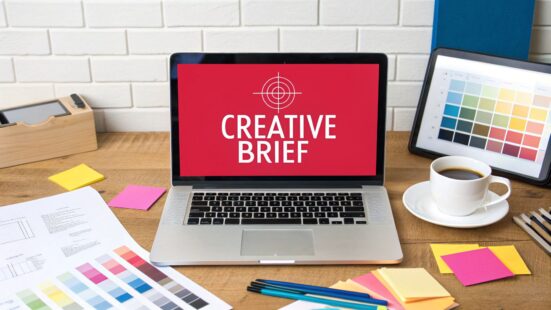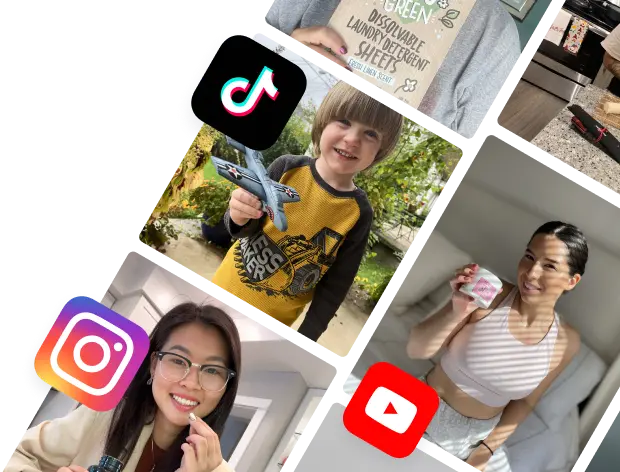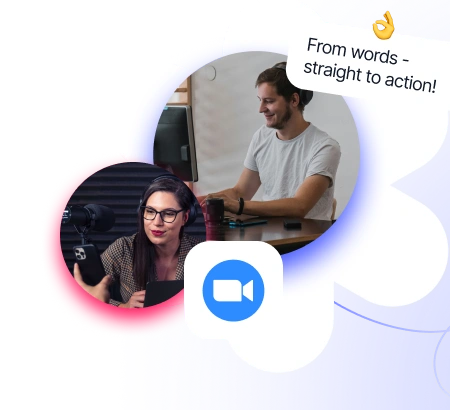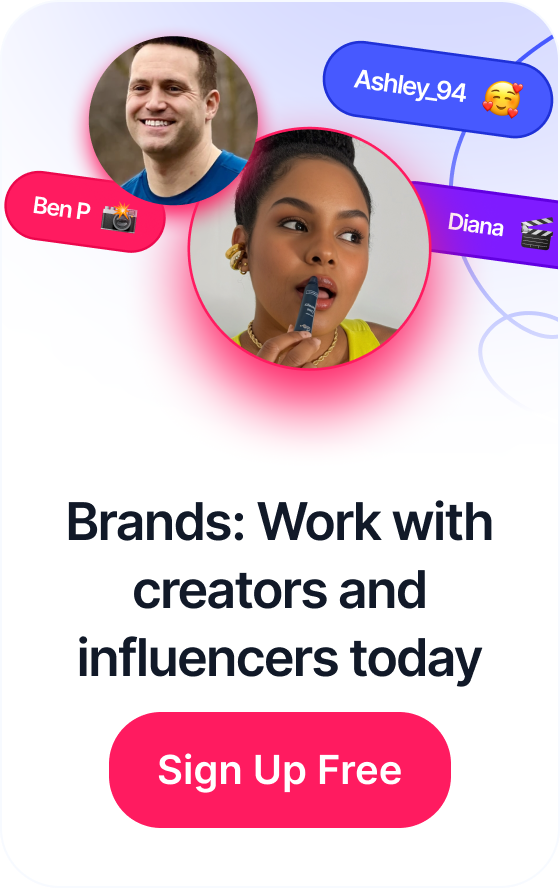 12 Best Content Calendar Template Resources for 2025
12 Best Content Calendar Template Resources for 2025
A creative brief template is your project's North Star—a simple, yet powerful, document that gets your entire team on the same page about goals, audience, and messaging before a single creative asset is made.
Think of it as the strategic blueprint that prevents those all-too-common project headaches: miscommunication, blown budgets, and the soul-crushing cycle of endless revisions. It’s what ensures everyone is marching in the same direction.
Table of Contents
Why Projects Fail Without a Strong Creative Brief

Let's be real for a second. We've all been there. A project kicks off with a ton of excitement, only to slowly descend into a chaotic mess of conflicting feedback, blown deadlines, and a final product that leaves everyone feeling a bit… underwhelmed.
Nine times out of ten, the root cause isn't a lack of talent or effort. It’s a simple failure to align from the get-go.
When you skip the creative brief, you're essentially asking your team to build a house without a blueprint. That kind of ambiguity is a breeding ground for project chaos, and it almost always leads to some painful outcomes.
The Real Cost of Poor Alignment
The consequences of a misaligned team are immediate and expensive. The infamous "endless revision cycle" becomes your new reality. Creatives are left guessing what stakeholders actually want, only to be sent back to the drawing board again and again. This isn't just inefficient; it torches your budget and absolutely tanks team morale.
And the creative work? It suffers, too. Without a laser-focused understanding of the target audience or the core message, the final output feels generic and completely misses the mark. It fails to connect because there was never a clear target to aim for in the first place.
A creative brief is more than just paperwork; it’s your project’s single source of truth. It transforms abstract goals into an actionable plan that empowers your team to produce their best, most impactful work.
Building Your Foundation for Success
A well-crafted creative brief template is the tool that stops this chaos before it starts. It’s a strategic document that forces all stakeholders to agree on the most critical elements—from design language and key messages to the audience and timeline—before a single dollar or hour is spent.
For a quick overview of what needs to go into this foundational document, take a look at the core components every effective brief should contain.
Core Components of an Effective Creative Brief
| Component | Purpose |
|---|---|
| Project Background | Provides context on why the project exists and what led to its initiation. |
| Objectives & Goals | Clearly defines what success looks like in measurable terms (e.g., increase leads by 15%). |
| Target Audience | Details the specific demographic and psychographic profile of who you're trying to reach. |
| Key Message | The single most important idea the audience should take away from the creative. |
| Competitors | Identifies key competitors and outlines their strengths and weaknesses. |
| Mandatories & Restrictions | Lists all "must-haves" (like logos, taglines) and "don't-dos" (like specific colors or words). |
| Timeline & Deliverables | Sets clear deadlines for specific outputs (e.g., social media graphics, video ads). |
| Budget | Specifies the financial resources allocated for the project. |
This table gives you a bird's-eye view, but the magic is in the details. Getting these elements down on paper solidifies your strategy. Even the naming convention of your brief is critical. With business users buried under an average of 121 emails per day, a clear, memorable name ensures your brief stands out and is easy to find. You can learn more about how small details like this impact project management with insights from Teamwork.com.
Ultimately, establishing this shared understanding upfront creates the framework for success. Your creative team gets the clarity they need to do amazing work, and stakeholders feel confident the project is tied directly to business goals. It’s a simple, strategic step that truly separates the successful projects from the ones that were doomed from the start.
The Anatomy of a Powerful Creative Brief Template
A great creative brief is much more than a checklist. Think of it as the script for a strategic conversation, a framework designed to pull critical information out of stakeholders and turn abstract business goals into a concrete, actionable plan for your creative team.
When you're building your own brief template, the real goal is to get past the surface-level answers. You need to dig deep and find the genuine "why" behind the project. Let's break down the essential pieces that transform a simple document into a powerhouse tool that guides, inspires, and gets results.
First, here's a bird's-eye view of how all these sections fit together to create one cohesive guide.
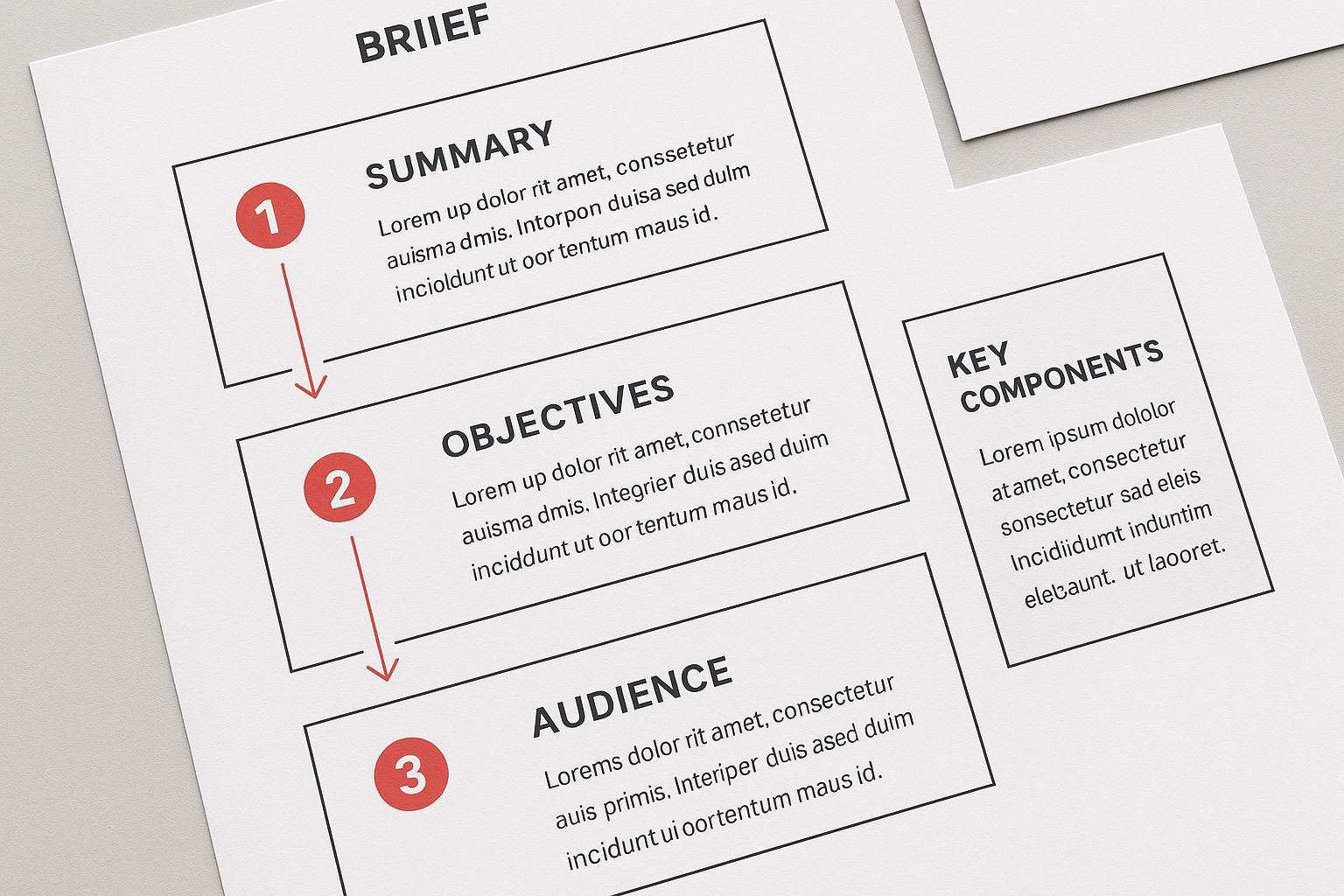
As you can see, each part builds on the last, telling a complete story from a business need to a creative solution.
The Project Background and Business Objectives
Every project has an origin story, and your creative team needs to hear it. Why are we doing this project, and why now? Is it a defensive move against a competitor? A proactive push into a new market? A direct response to slumping sales? This context is gold—it helps the team understand the stakes and the urgency.
Right after the backstory, you have to define what a "win" actually looks like. The business objectives section is where you translate that "why" into something you can actually measure. Vague goals like "increase brand awareness" just won't cut it. They’re useless. You need specific, quantifiable targets.
- For example: "Increase qualified leads from our new landing page by 20% within Q3."
- Or maybe: "Achieve a 5% conversion rate on our new product launch campaign."
These kinds of concrete goals give the creative work a clear, undeniable purpose. It's no longer about making something pretty; it’s about making something that moves the needle for the business.
Understanding the Target Audience
This is it. This is arguably the most critical part of any creative brief. The question "Who are we talking to?" demands a deep, empathetic answer. You have to go way beyond basic demographics. Dive into psychographics—what do they value? What keeps them up at night? What motivates them to act?
For instance, don't just say "males, 25-40." That's lazy. Try building a mini-persona: "We're talking to 'Alex,' a 32-year-old project manager who feels constantly overwhelmed by clunky, inefficient software. He values anything that saves him time and is incredibly loyal to brands that seem to 'get' his daily frustrations."
This level of detail is a game-changer. It helps your creatives speak Alex's language, not just shout marketing messages into the void.
A project that tries to speak to everyone ends up connecting with no one. A sharp, detailed audience profile is the foundation of resonant creative work.
The Core Message and Competitive Landscape
Once you know your audience inside and out, you can figure out your core message. What is the single most important thing you need "Alex" to walk away with? This isn't a tagline, at least not yet. It's the central idea, the north star that all creative executions will orbit around. Keep it simple, compelling, and unique.
A huge part of finding that unique angle is having a killer brand positioning statement. If you're struggling to nail yours down, it helps to look at some great brand positioning statement examples to see how top-tier companies distill their entire essence into one powerful idea.
Of course, your message doesn't exist in a bubble. The competitive landscape section is where you map out who else is vying for your audience's attention. Don't just list their names—analyze what they're doing.
- What's their core message?
- What does their visual style feel like?
- Where are the gaps? What aren't they saying that you can?
This analysis is your secret weapon. It ensures your work stands out instead of just adding to the noise.
Mandatories and Deliverables
Finally, every project has rules. The mandatories section is where you lay out all the non-negotiables—the "must-haves" and, just as importantly, the "must-nots."
This is the spot for things like:
- Brand Guidelines: Specific logos, fonts, and color palettes that are required.
- Legal Disclaimers: Any legal text, fine print, or disclosures that absolutely have to be there.
- Key Phrases: A specific call-to-action or tagline that must be included verbatim.
Getting this stuff down on paper from the very beginning prevents so many painful, unnecessary revisions down the line. It sets clear boundaries, allowing your team to exercise their creative freedom within the strategic framework you've built. It’s how you get work that is both brilliant and on-brand.
A rigid, one-size-fits-all creative brief is the enemy of good work. I’ve seen it happen time and time again. While having a solid core template is a great starting point, the real magic happens when you know how to adapt it. A brief for a quick social media ad simply doesn't need the same level of detail as one for a full website redesign.
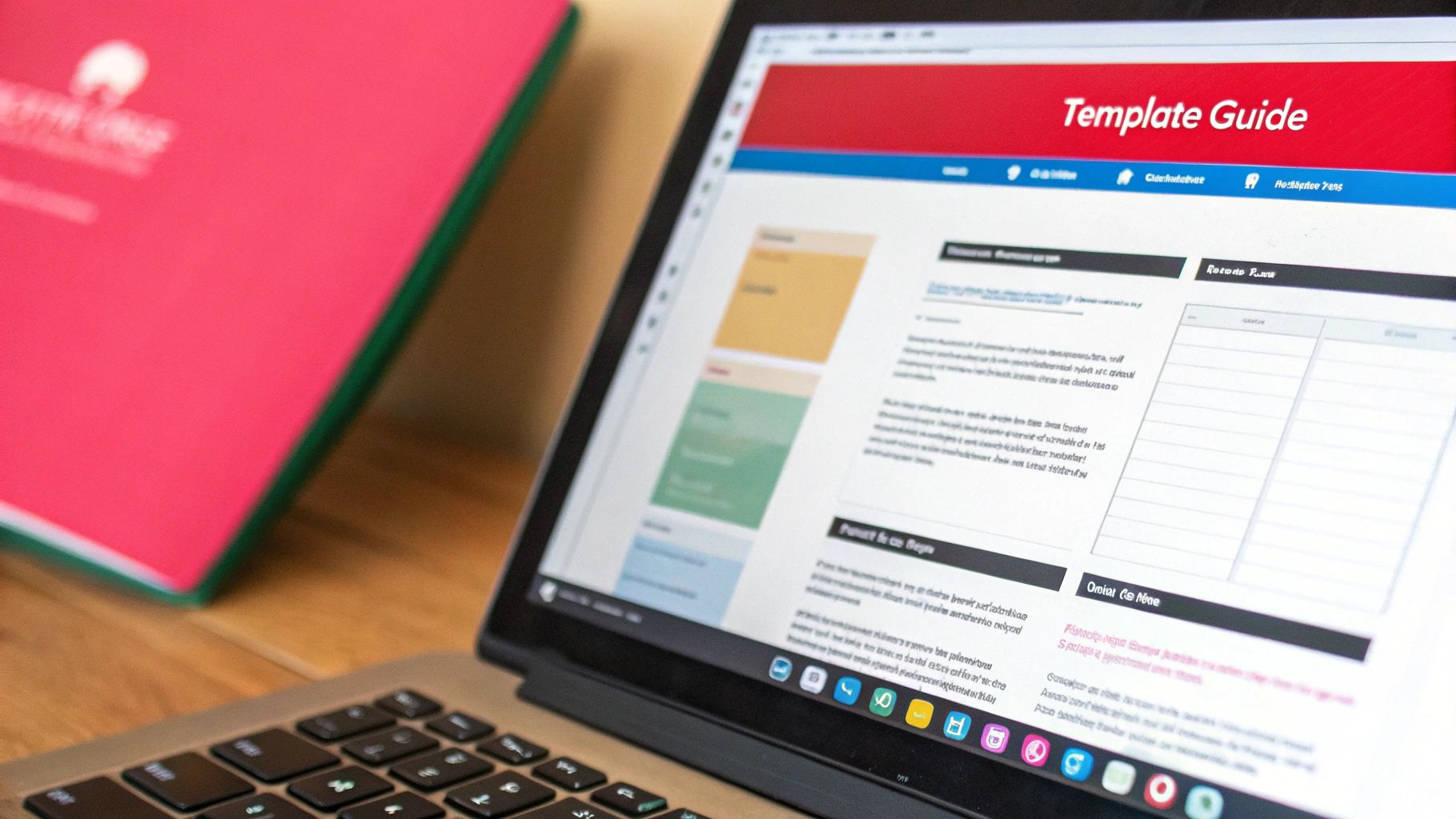
Think of your template as a modular framework, not a stone tablet. You can add, remove, or expand sections based on what the project actually needs. This keeps the brief a genuinely helpful guide, not a piece of bureaucratic red tape that slows everyone down.
This is especially true when you're working with outside partners. For example, if you're using digital marketing outsourcing, a well-tailored brief is non-negotiable for getting everyone aligned and ensuring a successful outcome.
Let's walk through how I'd tweak a creative brief for a few common project types.
The Major Marketing Campaign
When you're launching a big campaign—think a holiday promotion or a major product drop—your brief has to be your strategic north star. The goal here is total alignment across multiple channels, teams, and timelines. It needs to be comprehensive.
For these larger-than-life projects, you'll want to beef up a few key areas:
- Channel Strategy: Don't just list platforms. Explicitly outline why you're using Instagram Reels, TikTok, Google Ads, or email. What specific role does each one play in guiding the customer from awareness to conversion?
- KPIs per Channel: Go beyond the big business goals. Define what success looks like on each platform. That could be click-through rates for ads, engagement rates for social posts, or open rates for emails. Get granular.
- Detailed Budget Breakdown: A single top-line number won't cut it. Break down where the money is going. Allocate specific amounts for content creation, ad spend, influencer fees, and any other line items.
Pro Tip: For major campaigns, I always add a "Key Stakeholders" section with a RACI (Responsible, Accountable, Consulted, Informed) chart. It’s a lifesaver that clarifies roles from the jump and prevents those classic communication bottlenecks when multiple departments are involved.
The New Website Launch
Building a new website or tackling a significant redesign is a different beast altogether. The focus shifts from pure campaign messaging to user experience (UX) and technical functionality.
Your brief has to reflect this shift. While the audience and objectives are still critical, you’ll need to add or heavily expand on a few other elements:
- User Personas: This needs to be more than a generic target audience slide. I’m talking about detailed user stories that highlight specific pain points the new website absolutely must solve.
- Technical Constraints: This part is vital for your developers and designers. You have to list any backend requirements, CMS limitations, or necessary integrations (like connecting to a CRM or e-commerce platform). Surprises here are expensive.
- Content and SEO Strategy: You don't need the full strategy, but a high-level outline is crucial. Map out the proposed site architecture, identify the key pages, and list the primary keywords you'll be targeting from day one.
The Quick-Turn Content Series
Not every project is a massive undertaking. For smaller, more agile work like a blog series or a batch of social media graphics, a multi-page document is overkill. You need a brief that's built for speed.
This is where you'll want to create a "micro-brief." Condense your standard template down to its absolute essentials. Keep the core pillars—objective, audience, and key message—but strip away everything else. The goal is maximum clarity with minimum administrative drag.
This practice of tailoring the brief to the job is a globally recognized best practice. As HubSpot's blog notes, briefs are often categorized into types like Marketing, Product Design, and Agency briefs, each designed for a specific purpose. Whether it's a broad campaign strategy or a precise client execution, making the brief fit the project is what separates the pros from the amateurs.
Writing a Brief That Actually Inspires Creativity
A great creative brief does more than just inform; it actually inspires. I've seen it time and time again—a document stuffed with dry corporate jargon and rigid demands is the fastest way to get dull, uninspired work back from your team.
The goal here is to craft a brief that creatives are genuinely excited to work on. This requires a real mental shift. You have to move from a mindset of giving orders to one of providing inspiration. Instead of dictating a creative execution, your real job is to frame the problem so compellingly that brilliant solutions feel like the natural outcome.
From Prescription to Inspiration
The most common mistake I see is a brief that’s just way too prescriptive. It’s the kind that tells a designer exactly which font to use or a copywriter the precise headline to write. That approach completely stifles creativity and turns talented professionals into simple order-takers.
Instead, your focus should be on providing sharp, actionable insights that spark ideas.
- Use Evocative Language: Frame the challenge with exciting, human language. Don't say, "We need a campaign to sell more widgets." Try something like, "How can we show overwhelmed project managers that our widget is their secret weapon for a stress-free week?"
- Show Real Audience Empathy: Share a genuine, human insight about your target audience. For instance: "Our audience doesn't trust slick corporate ads; they trust authentic reviews from people just like them." This immediately points your creative team toward ideas rooted in user-generated content or testimonials.
This approach gives your creative team the "what" and the "why," then trusts them to figure out the "how." It respects their expertise and, most importantly, leaves room for those unexpected ideas that truly break through.
The best briefs don’t contain the answers. They contain the clues that lead to brilliant answers. It’s a treasure map, not a set of IKEA instructions.
The importance of striking this balance is huge. A well-built creative brief template is both a strategic and tactical tool. It lays out the project goals, audience profiles, and core messaging while heading off the endless cycle of meetings and edits that derail so many projects. By getting everyone aligned from day one, you slash confusion and scope creep, unlocking some serious efficiency. You can learn more about how a solid brief strengthens campaign workflows by reading this guide from Foreplay.co.
Make It a Conversation Starter
Finally, and this is a big one, you need to see the brief as a kickoff point for collaboration, not a final decree. I always make it a point to share my draft with the lead creative before it’s set in stone. This one simple step completely transforms the dynamic of the project.
It gives them a chance to ask clarifying questions, poke holes in the strategy, and get genuinely invested before a single pixel is pushed or word is written. Suddenly, they're a partner in the strategy, not just an executor of it.
This collaborative start is the secret ingredient to a creative brief that doesn't just get the job done—it inspires work that people actually remember.
Alright, let's move from theory to practice.
You can read about strategy all day, but the real learning—the kind that sticks—happens when you roll up your sleeves and get to work. This is your launchpad. It’s designed to help you do just that, right now.
After years of running projects, we’ve distilled everything we know into a comprehensive, fully editable creative brief template. And we're giving it to you, completely free.
Think of this as more than just a blank document. It’s a proven framework that’s been battle-tested on countless projects. Inside, you'll find all the essential sections we've covered, but with helpful prompts and clear notes baked right in. These aren't just placeholders; they're guides to help you ask the right questions and pin down the critical details every single time.
Your First Step to Smoother Projects
Consider this your first, tangible step toward killing the chaos and running more effective creative projects. Because it’s a Google Doc, you can instantly collaborate with your team, share it with stakeholders for feedback, and tweak it to fit your exact needs—whether you're planning a massive campaign or just a quick batch of social content.
You can save a copy, make it your own, and finally start building the powerful alignment your team has been missing.
A great template doesn't just ask what you want to do; it forces you to articulate why it matters. That's the foundation that turns a decent idea into genuinely great creative work.
Our only goal here is to hand you a tool that makes an immediate difference. Here’s what you get with the template:
- Fully Editable Format: It’s a Google Doc. Copy it, edit it, and share it with your entire team. No locked PDFs or clunky software to deal with.
- Built-in Prompts: Each section comes loaded with guiding questions and our own insider tips to make sure no crucial details slip through the cracks.
- Ready for Action: You can put this to work on your very next project. No waiting. Just immediate clarity and structure.
Ready to stop the endless revision cycles and start producing work that actually hits the mark? Your new go-to creative brief template is waiting.
➡️ Get Your Free Creative Brief Template (Google Doc) Here ⬅️
By putting a structured approach like this in place, you’ll give your team the clarity they need to knock it out of the park. This is how you build the alignment that exceptional results are made of. Grab it now and see how much smoother your creative workflow can be.
Got Questions About Creative Briefs? I've Got Answers.
Even with the perfect template, questions are going to pop up. It’s just a natural part of weaving a new process into your team's rhythm. Over the years, I've heard the same handful of questions from teams just getting their feet wet, so let's tackle them head-on.
Getting these details right is what turns a brief from just another piece of administrative work into a genuine tool for clarity. The whole point is to make the process feel light, intuitive, and actually helpful.
How Long Should a Creative Brief Be?
This is always the first question I get, and the answer is refreshingly simple: as short as possible, but as long as necessary.
A creative brief isn't a novel. If your team needs to block out an hour just to read the thing, you’ve already lost the battle.
The sweet spot is almost always one to two pages. This length forces you to be ruthless with your words and focus only on what truly matters—the objective, the audience, and the single most important message. A bloated brief stuffed with fluff is just as useless as having no brief at all.
Think about it this way: a quick social media graphic might only need a few focused paragraphs. A massive product launch? That’s where you’ll probably need those two full pages to cover all the strategic ground.
A brief’s value is in its clarity, not its length. The goal is to provide a sharp, actionable guide that can be absorbed in minutes, not hours. If it's not scannable, it's not effective.
Who Actually Owns the Creative Brief?
To keep the brief from getting lost in a sea of shared folders, it needs a clear owner. This usually falls to the person leading the project—typically a marketing manager, account manager, or brand strategist.
But here’s the key: "owning" it doesn't mean writing it in a vacuum. The best briefs are born from collaboration. The owner’s real job is to be an investigator, gathering insights from all the key players. This means talking to sales, product teams, and especially the creative leads themselves.
This collaborative spirit gets everyone bought-in from the start. It's your best defense against those dreaded last-minute surprises or disagreements over the project’s direction. The owner drives the bus, but everyone on board should have agreed on the destination.
What Is the Biggest Mistake to Avoid?
If there's one pitfall to sidestep, it's this: being too prescriptive with the creative execution. A brief that dictates the exact headline, image, and layout doesn't inspire creativity; it suffocates it. You hired talented people for a reason—let them do their job.
Your role is to define the problem, not dictate the solution. Give them the strategic guardrails:
- The business goal we need to hit.
- The audience we absolutely have to connect with.
- The one thing they must remember after seeing our work.
Then, step back. When you trust your creative team with the "what" and the "why," they'll come back with a "how" that’s far more powerful and unexpected than you could have ever mapped out.
When Exactly Do You Need a Brief?
This one’s easy. You need a creative brief for every single project. I mean it.
Big or small, internal or external, a quick-turnaround ad or a year-long campaign—every single project benefits from a documented source of truth.
It's a classic trap to skip the brief on smaller jobs because it "feels like overkill." But those are precisely the projects that tend to spiral out of control with endless, tiny revisions. Why? Because there was no shared alignment from the get-go. A simple, one-paragraph brief is infinitely better than a verbal-only kickoff that leaves everything open to interpretation.
Ready to stop the guesswork and start building alignment? JoinBrands offers an all-in-one platform where you can set clear creative briefs, connect with over 250,000 creators, and manage your entire campaign workflow seamlessly. Accelerate your sales and amplify your social presence by visiting https://joinbrands.com to see how our AI-powered tools can transform your content creation process.
